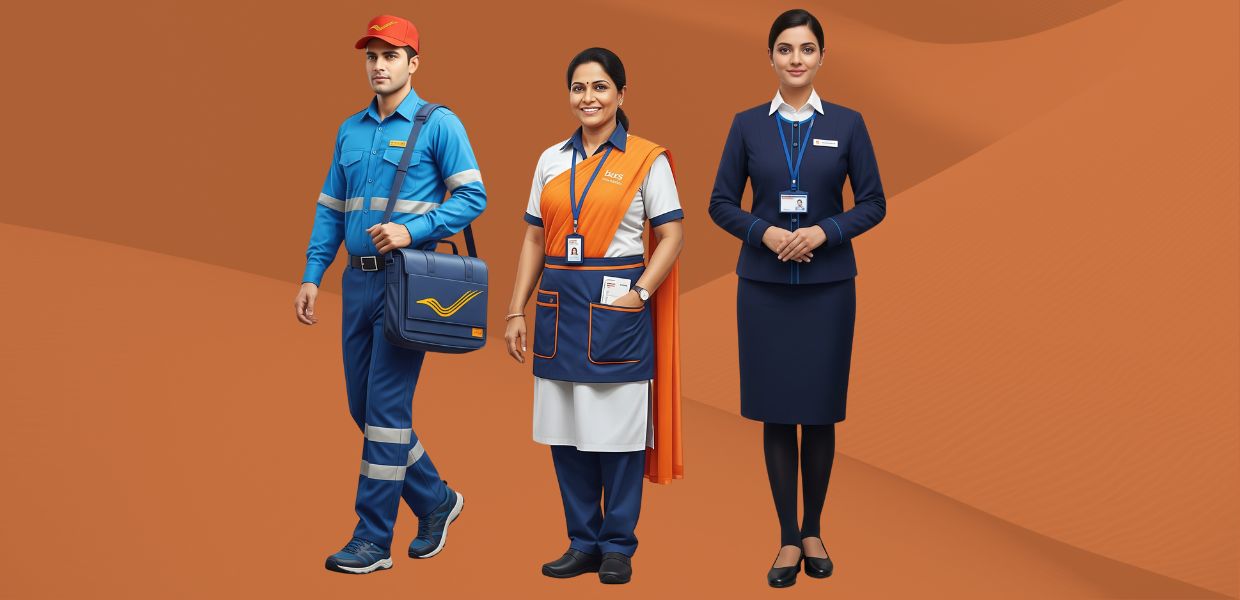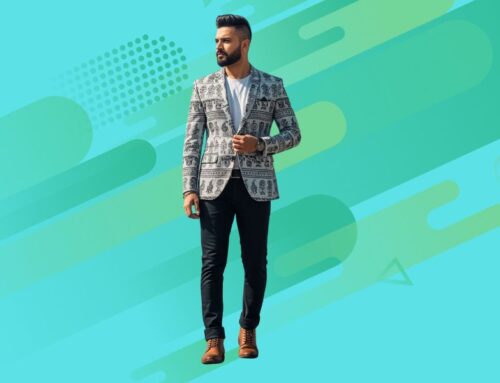The familiar sight of the khaki-clad postman, the crisp white and blue of the BEST bus conductor, or the formal saree/suit of a bank teller are ingrained in the Indian collective consciousness. For decades, these uniforms served not just as practical workwear but as symbols of trust, authority, and public service. However, step back and observe closely, and you’ll notice a quiet sartorial revolution underway. “Beyond the Khaki & White: The Evolution of Uniforms and Professional Attire in India’s Service Sector” reveals how these often-overlooked sartorial choices have undergone subtle, and sometimes drastic, transformations, influenced by a dynamic interplay of practicality, brand identity, and evolving societal perceptions.
The Postman: From Colonial Khaki to Contemporary Comfort
The quintessential Indian postman, a figure synonymous with communication and connection, was for generations defined by his robust khaki uniform. This choice, rooted in the British colonial era, was primarily driven by practicality – khaki was durable, easily maintained, and camouflaged dust effectively. The accompanying pith helmet or cloth cap completed the look, offering protection from the sun.
Over the decades, while khaki largely remains, its form has adapted. The heavy cottons have given way to lighter, more breathable blends, reflecting a need for comfort in India’s diverse climate. The stiff, formal cut has softened, allowing for greater mobility. More significantly, the introduction of blue elements in some post office uniforms, particularly for parcel delivery or specific services, hints at a subtle brand refresh – moving away from a purely utilitarian image towards a more approachable, modern service provider. This shift mirrors the postal department’s own efforts to modernize, embracing digital services while retaining its core function.
BEST Conductors: Navigating the Lanes of Identity
Mumbai’s iconic BEST (Brihanmumbai Electric Supply and Transport) buses are more than just transport; they’re a lifeline, and their conductors are an integral part of the city’s rhythm. Their traditional uniform of white shirt and trousers, often with a blue tie or scarf, exuded a sense of cleanliness, discipline, and accessibility. This simplicity was practical for a job that involves constant movement and public interaction in a bustling metropolis.
Recent years have seen more noticeable shifts. While the core colours often remain, there’s been an introduction of contemporary cuts, more durable and comfortable fabrics, and even subtle branding elements on shirts. The emphasis is on maintaining a professional yet approachable look, crucial for frontline staff interacting with millions daily. The evolution here is less about a drastic colour change and more about material innovation and fit, ensuring that the uniform remains practical for long shifts while subtly enhancing the professional image of Mumbai’s public transport system.
Bank Tellers: From Formal Fortitude to Friendly Faces
Perhaps no sector has seen as significant a shift in professional attire as banking. Historically, bank tellers and officers, especially in public sector banks, were clad in very formal, often conservative attire – sarees for women and suits/formal shirts for men. This sartorial choice projected an image of gravitas, trustworthiness, and financial fortitude, aligning with the perception of banks as bastions of stability.
The liberalization of the Indian economy and the entry of private and foreign banks dramatically altered this landscape. Suddenly, brand identity became paramount. While professionalism remained key, there was a concerted effort to appear more approachable, customer-friendly, and modern.
- For Women: The saree, while still present, often gives way to more contemporary ethnic wear like kurtis with trousers or even western business casuals (blazers with shirts/trousers). The fabrics are lighter, the designs less ornate, focusing on a clean, sharp look.
- For Men: Suits are still common in higher echelons, but for customer-facing roles, the emphasis has shifted to crisp formal shirts, trousers, and often branded ties or scarves that subtly incorporate the bank’s colours and logo. Some modern banks have even embraced smart casuals on specific days, fostering a more relaxed yet professional environment.
This evolution in banking attire directly reflects a shift in banking philosophy – from an intimidating institution to a customer-centric service provider. The uniform now aims to convey efficiency, modernity, and approachability, vital in a highly competitive financial landscape.
Beyond the Fabric: Factors Driving the Change
The evolution of these uniforms is not arbitrary; it’s a microcosm of larger societal and economic shifts:
- Practicality & Comfort: India’s climate, demanding work environments, and long hours necessitate uniforms that are comfortable, durable, and easy to maintain. Advances in fabric technology play a crucial role here.
- Brand Identity & Corporate Image: In an increasingly competitive service economy, uniforms are powerful tools for brand building. They create a consistent visual identity, communicate professionalism, and help distinguish one service provider from another.
- Societal Perceptions & Customer Expectations: As India modernizes, so do customer expectations. There’s a growing preference for service providers who appear modern, efficient, and approachable, influencing uniform design away from overly rigid or outdated styles.
- Gender Neutrality & Inclusivity: While subtle, there’s a gradual move towards more inclusive uniform options that cater to diverse body types and preferences, though this is still an evolving area.
- Cost-Effectiveness & Sustainability: Organizations often balance the desire for a modern look with the practicalities of bulk procurement, maintenance costs, and increasingly, sustainable sourcing.
In conclusion, the uniforms of India’s everyday service professionals are far more than just clothes. They are living documents, quietly chronicling India’s journey from a post-colonial state to a globalized economy. The evolution from the steadfast khaki and white to more dynamic, branded, and comfortable attire reflects a deeper understanding of functionality, aesthetics, and the ever-changing relationship between service providers and the public they serve. The silent narratives woven into these fabrics tell a compelling story of a nation in constant evolution.











Leave A Comment